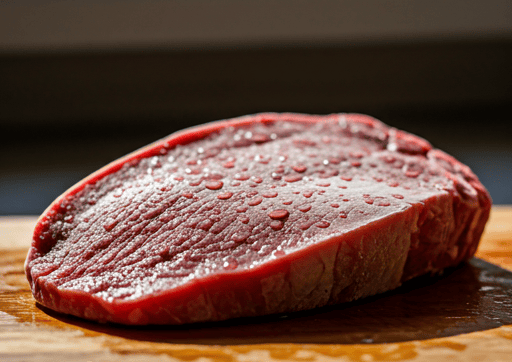Non-thermal thawing technology using oscillating current
SUSTAINABILITY


While freezing is the most effective preservation method, traditional thawing processes—like air thawing or immersion—often compromise food integrity through nutrient loss, microbial growth, and uneven thawing. Emerging technologies such as ultrasonic, microwave, and radio frequency thawing attempt to address these challenges but suffer from limitations, including high costs, safety concerns, and localized overheating. Tackling this limitation, China-based, Jiangnan University has filed a patent application on non-thermal thawing technology that improves thawing efficiency, food quality, and energy usage.
The core of this invention lies in applying a controlled oscillating current directly to frozen food. By delivering energy equivalent to or slightly greater than that required to melt ice crystals, the food can be uniformly thawed without exceeding a terminal internal temperature of 15°C. This controlled energy delivery prevents overheating, reduces the risk of protein denaturation, and preserves food texture and nutritional quality.
The technology features a non-thermal thawing device consisting of two oscillating current emission components that sandwich the frozen food, ensuring consistent energy application. These components include conductive modules that make direct contact with the food, efficiently transferring current to melt the ice. The method can also accommodate irregularly shaped foods, a major limitation of previous technologies.
Key Advantages of the Non-Thermal Thawing Method
Uniform and Efficient Thawing
The oscillating current gradually melts ice crystals both inside and outside the food, ensuring even thawing. A staged application process further controls energy delivery, preventing localized overheating and surface damage. This results in minimal temperature variation across the food's internal cross-section.Improved Food Quality
By maintaining a final thawing temperature below 15°C, the method avoids microbial growth, protein breakdown, and moisture loss, preserving the food’s original texture, flavor, and nutrients.Energy Efficiency and Safety
Compared to high-voltage electrostatic or microwave methods, the oscillating current approach operates at lower energy levels, reducing operational costs and safety risks. The staged, periodic current application—often likened to a “marquee-style” energy delivery—avoids energy accumulation, ensuring food integrity.Adaptability for Various Foods
This method is suitable for diverse frozen foods, including meat, aquatic products, and flour-based items. It can thaw foods with thicknesses ranging from 0.5 cm to 15 cm, with current intensity adjusted based on the food’s size and shape.Simple and Scalable Technology
The non-thermal thawing device features a straightforward design, making it practical for commercial food processing. Its versatility and cost-effectiveness make it an attractive option for the food industry.
How It Works
The process involves applying oscillating currents with intensities ranging from 3 mA to 2000 mA and frequencies of 1 Hz to 100 kHz. For thicker foods, the current intensity is adjusted to ensure effective thawing. The thawing can occur in multiple stages, with the current intensity or holding time reduced gradually to prevent overheating and maintain thawing linearity.
The “scanning application” of oscillating currents ensures different food regions receive energy intermittently, preventing excessive energy build-up and minimizing juice loss. This precise control enables the simultaneous melting of internal and external ice crystals, achieving uniform thawing.
It can be integrated into appliances such as refrigerators, industrial thawing systems, and commercial kitchens. By reducing thawing time, energy consumption, and food quality loss, this technology enhances the efficiency of food supply chains and meets the rising global demand for safe, high-quality frozen foods.
